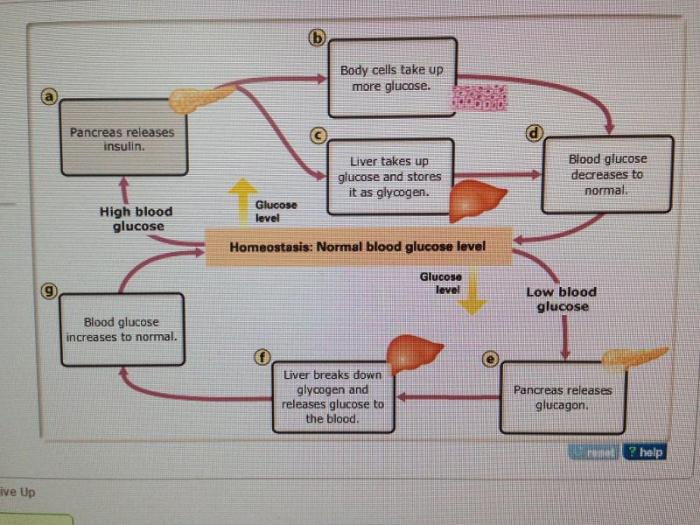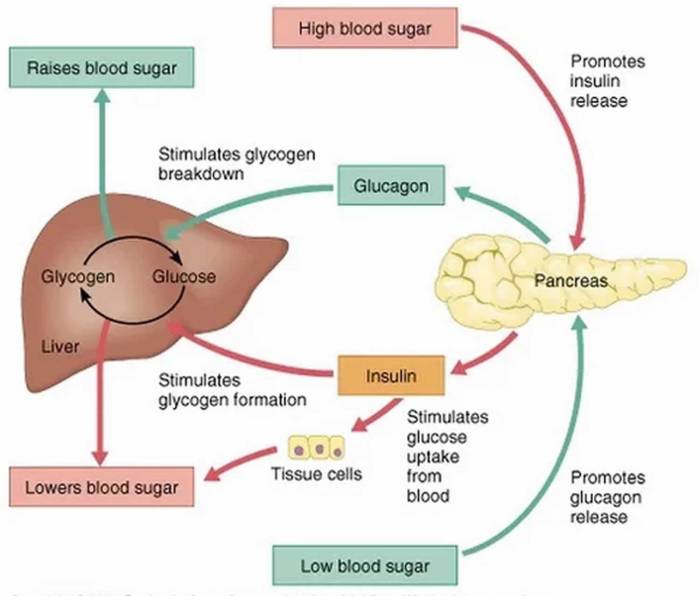Bioflix activity homeostasis high blood glucose – In this Bioflix activity, we delve into the concept of homeostasis, specifically focusing on its significance in regulating blood glucose levels. We will explore the crucial role of the pancreas, the mechanisms involved in maintaining glucose balance, and the consequences of high blood glucose.
This exploration will shed light on the importance of managing blood glucose levels to prevent potential health complications.
Bioflix Activity Homeostasis

Homeostasis, a fundamental concept in biology, refers to the maintenance of a stable internal environment despite external changes. In the context of blood glucose levels, homeostasis is essential for optimal body function.
The pancreas plays a crucial role in maintaining blood glucose homeostasis. When blood glucose levels rise, the pancreas releases insulin, a hormone that stimulates cells to absorb glucose from the bloodstream. Conversely, when blood glucose levels fall, the pancreas releases glucagon, a hormone that stimulates the liver to release glucose into the bloodstream.
Regulation of Blood Glucose Levels, Bioflix activity homeostasis high blood glucose
Insulin and glucagon work in tandem to regulate blood glucose levels. Insulin promotes glucose uptake by cells, while glucagon stimulates glucose release from the liver. The liver and muscles also contribute to glucose homeostasis by storing and releasing glucose as needed.
Factors such as diet and exercise can disrupt blood glucose regulation. A high-carbohydrate diet can lead to elevated blood glucose levels, while exercise can lower blood glucose levels by increasing glucose uptake by muscles.
Consequences of High Blood Glucose
High blood glucose levels, also known as hyperglycemia, can have both short-term and long-term consequences. Short-term effects include increased thirst, frequent urination, and fatigue. Chronic hyperglycemia can lead to complications such as cardiovascular disease, kidney damage, and nerve damage.
Maintaining Blood Glucose Homeostasis
Maintaining healthy blood glucose levels is crucial for overall health. This can be achieved through a combination of diet, exercise, and medication when necessary.
Monitoring blood glucose levels regularly is essential for individuals with diabetes or at risk of developing diabetes. Interpretation of blood glucose results can provide insights into the effectiveness of treatment and the need for lifestyle modifications.
| Diet | Exercise | Medication |
|---|---|---|
| Consume a balanced diet rich in fiber and low in processed carbohydrates | Engage in regular physical activity to promote glucose uptake | Use insulin or other medications as prescribed to manage blood glucose levels |
| Limit sugary drinks and processed foods | Choose low-glycemic index foods to minimize blood glucose spikes | Monitor blood glucose levels regularly and adjust medication dosage as needed |
Question Bank: Bioflix Activity Homeostasis High Blood Glucose
What is the role of insulin in blood glucose regulation?
Insulin is a hormone that helps glucose enter cells for energy production, thereby lowering blood glucose levels.
What are the long-term consequences of high blood glucose?
Chronic hyperglycemia can lead to cardiovascular disease, kidney damage, nerve damage, and vision problems.
How can I maintain healthy blood glucose levels?
Maintaining a healthy diet, engaging in regular exercise, and taking prescribed medications can help manage blood glucose levels.


